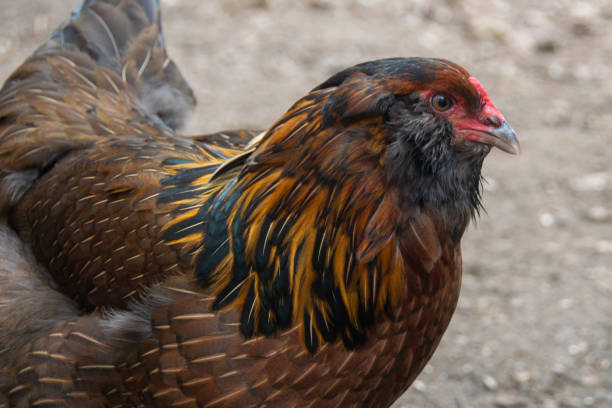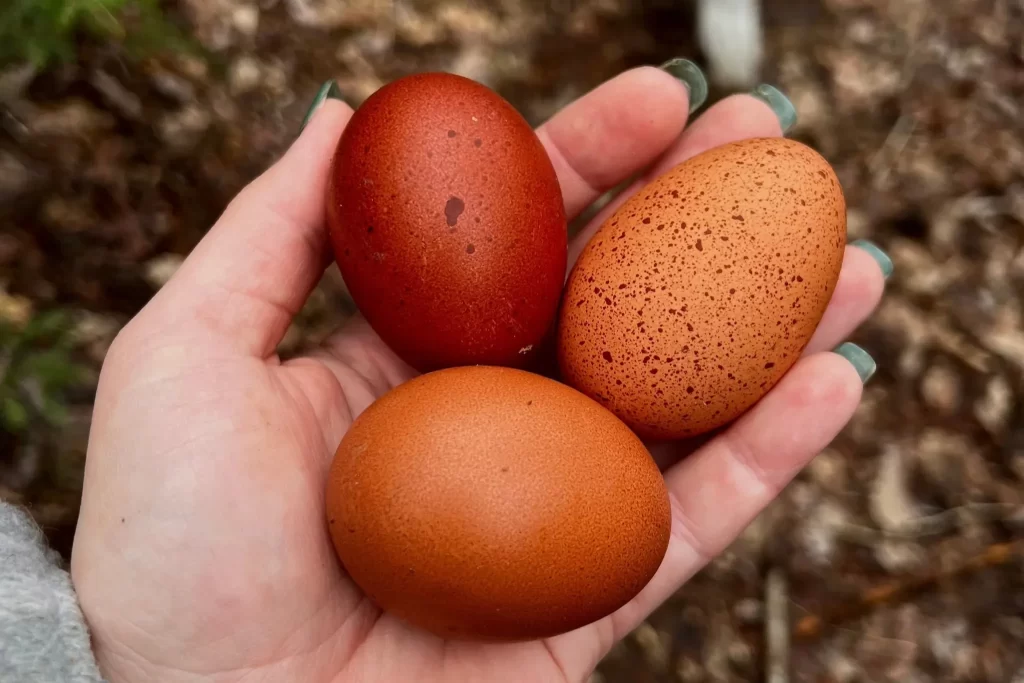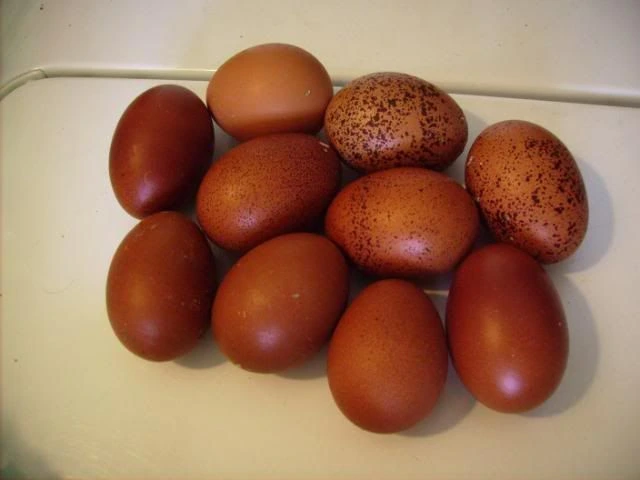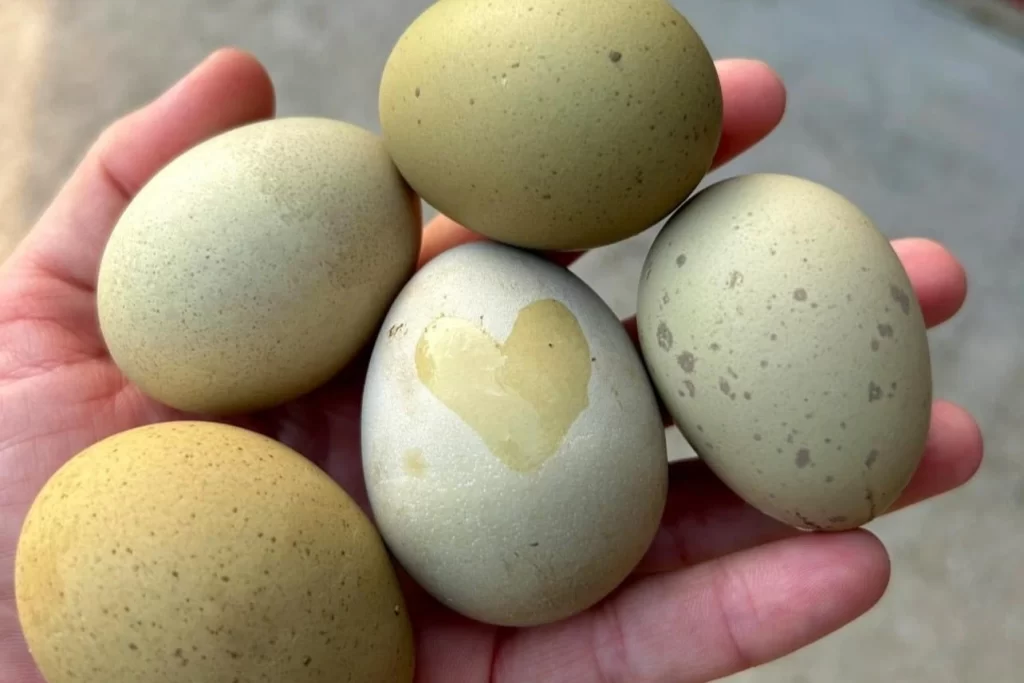Table of Contents
Eggs are a staple in households and cuisines worldwide, but not all eggs are created equal. The charm of colorful eggs—ranging from sky blue to olive green and deep chocolate brown—has captured the imagination of chefs, farmers, and enthusiasts alike. These vibrant hues, a result of fascinating genetics and careful breeding, offer more than aesthetic appeal. They bring opportunities for differentiation in niche markets, add a touch of luxury to the farm-to-table experience, and spark joy in simple egg baskets.
In this article, we explore everything you need to know about chickens that lay colored eggs. From the science behind egg pigmentation to profiles of 14 remarkable chicken breeds, and actionable tips on care, you’ll discover how these unique layers can transform your flock and farming experience. Whether you’re a backyard hobbyist, a small-scale farmer, or a culinary artist, this guide offers expert insights to help you get started on your colorful egg journey.
Why Do Chickens Lay Colorful Eggs?
The vibrant hues of eggshells have long fascinated poultry enthusiasts and farmers alike. Understanding the science behind these colors involves exploring genetics, biology, and environmental factors.
The Role of Pigments in Egg Coloring
Eggshell colors are determined by pigments secreted by specialized cells in the hen’s oviduct. These pigments are deposited onto the eggshell during its formation:
- Oocyanin:
- Responsible for blue-colored eggs, this pigment is deposited early in the shell formation process, permeating the entire shell.
- Breeds like Ameraucana and Araucana are renowned for producing bright blue eggs.
- Protoporphyrin:
- Adds brown or reddish tones to eggs. This pigment is deposited in the final stages of shell formation, resulting in surface-level coloring.
- Breeds such as Marans and Welsummers lay dark brown and speckled eggs, showcasing this pigment.
- Biliverdin: Produces green eggs when combined with protoporphyrin. Green shades are particularly common in hybrid breeds like Olive Eggers.
Factors Influencing Egg Color
While pigments are crucial, other factors also contribute to the vibrancy and consistency of eggshell colors:
- Breed Genetics: The primary determinant of eggshell color lies in a hen’s genetic makeup. Breeds inherit specific pigment-producing traits that dictate egg coloration.
- Diet and Nutrition: A well-balanced diet enhances pigment production, ensuring vibrant egg colors. Deficiencies in calcium or key nutrients can lead to paler or inconsistent hues.
- Age and Health: Older hens may lay eggs with thinner or lighter-colored shells. Healthy hens in optimal conditions consistently produce well-colored eggs.
- Environmental Factors: Stressors such as extreme temperatures, predator threats, or overcrowding can reduce pigment production, affecting egg color.

This intricate combination of biology and environment results in the wide array of colorful eggs that delight consumers and enrich egg baskets.
The Importance of Chicken Egg Color in Culinary and Agricultural Industries
Colorful eggs are more than just visually appealing; they hold unique value across culinary and agricultural sectors, driving demand and creating opportunities for innovation.
Culinary Significance
- Enhanced Visual Appeal: Colorful eggs, such as sky-blue or chocolate-brown varieties, add charm to dishes and presentations. They are a favorite in gourmet restaurants and luxury bakeries.
- Perception of Quality: Consumers often associate unique egg colors with higher quality, freshness, and nutritional value. Farm-to-table and organic markets thrive on this perception.
- Popularity in Artisanal Markets: Blue, green, and speckled eggs have become staples in luxury food sectors. Their rarity and aesthetic appeal make them sought-after products in farmer’s markets and specialty stores.
Agricultural Significance
- Market Demand for Niche Products: The growing demand for differentiated products has created a lucrative niche for colorful eggs. Small-scale farmers can capitalize on this trend to increase their profits.
- Urban and Small-Scale Farming: Urban farmers often focus on breeds like Easter Eggers or Cream Legbars to cater to niche markets. The compact size of these operations aligns perfectly with the high-margin business of colorful eggs.
- Breed Preservation: Cultivating breeds that lay colorful eggs contributes to biodiversity and the preservation of heritage breeds, such as Penedesenca or Croad Langshan.
By combining aesthetics with market demand, colorful eggs have emerged as a symbol of innovation and quality in the poultry industry.
Top 14 Chicken Breeds for Colorful Eggs: In-Depth Insights
The vibrant and varied colors of eggs laid by certain chicken breeds captivate enthusiasts, chefs, and farmers alike. This section highlights the top 14 chicken breeds renowned for their ability to lay colored eggs, offering valuable information about their egg colors, traits, and suitability for various farming needs.
1. Easter Egger
- Egg Color: Blue, green, pink, or cream, with unpredictable hues.
- Key Traits:
- Hybrid chickens with a friendly temperament, making them perfect for families and backyard flocks.
- Hardy and adaptable to various climates, they are prolific layers, producing around 200 eggs per year.
- Their mixed heritage means each Easter Egger hen is unique in appearance and egg color.


2. Ameraucana
- Egg Color: Pastel blue, often described as “robin’s egg blue.”
- Key Traits:
- A purebred descendant of the Araucana, they are calm, cold-hardy birds, ideal for northern climates.
- Excellent layers, averaging 180–200 eggs annually.
- Their bearded and muffed appearance adds to their charm, making them a favorite for ornamental and practical purposes.


3. Araucana
- Egg Color: Bright blue, with a consistent, vibrant tone.
- Key Traits:
- Native to South America, these birds are known for their unique tufted ears and rumpless bodies.
- Hardy and capable of thriving in diverse climates, they lay approximately 150 eggs yearly.
- Their rarity and striking eggs make them highly sought after by breeders and enthusiasts.


4. Cream Legbar
- Egg Color: Sky blue, with a soft, pastel-like quality.
- Key Traits:
- Known for their autosexing trait, allowing gender identification at hatching, which simplifies flock management.
- Active and friendly, they lay around 200 eggs annually.
- Cream Legbars are excellent for backyard farmers aiming for productivity and colorful eggs.


5. Olive Egger
- Egg Color: Shades of green, ranging from light mint to deep olive.
- Key Traits:
- A hybrid created by crossing blue egg layers with dark brown egg layers, resulting in unique green tones.
- Playful and personable, these chickens are reliable layers, producing 180–200 eggs annually.
- Their mixed parentage makes them adaptable to various climates and environments.


6. Marans (e.g., Black Copper Marans)
- Egg Color: Deep chocolate brown, sometimes with a reddish or purplish tint.
- Key Traits:
- Famous for their glossy, dark eggs, Marans are prized in both culinary and ornamental circles.
- Hardy in diverse climates, they lay approximately 150–200 eggs yearly.
- Their striking plumage and calm demeanor make them a favorite for farmers and hobbyists.


7. Welsummer
- Egg Color: Terracotta with speckles, offering a rustic, natural appearance.
- Key Traits:
- Excellent foragers, these chickens thrive in free-range setups, making them ideal for sustainable farming.
- Friendly and intelligent, they produce around 160–200 eggs annually.
- Originating from the Netherlands, they are valued for their adaptability and egg aesthetics.


8. Penedesenca
- Egg Color: Dark reddish-brown, often with a glossy finish.
- Key Traits:
- Native to Spain, these chickens are exceptional foragers and excel in free-range environments.
- Laying approximately 120–160 eggs annually, they are ideal for small-scale and heritage farming.
- Their exotic eggs and unique history appeal to niche markets and heritage breeders.


9. Isbar
- Egg Color: Green with subtle variations, often accompanied by speckling.
- Key Traits:
- A Swedish breed, Isbars are cold-hardy and suitable for northern climates.
- These dual-purpose chickens lay around 150–180 eggs annually.
- Their consistent productivity and unique egg color make them a standout choice for backyard flocks.


10. Croad Langshan
- Egg Color: Dark brown with a purplish hue, adding a regal touch to egg baskets.
- Key Traits:
- Originating from China, these dual-purpose chickens are calm and easy to manage.
- Laying 150–180 eggs annually, they are valued for both their meat and eggs.
- Their elegant appearance and rare eggs appeal to ornamental and practical farmers alike.


11. Barnevelder
- Egg Color: Light chocolate brown, often with a speckled pattern.
- Key Traits:
- Known for their laced plumage, Barnevelders are stunning birds with a friendly disposition.
- Laying 150–200 eggs annually, they are ideal for backyard flocks.
- Their consistent laying and adaptability make them a practical choice for small farms.


12. Prairie Bluebell Egger
- Egg Color: Bright sky blue, with a bold, eye-catching hue.
- Key Traits:
- A hybrid breed designed for consistent laying, producing up to 280 eggs annually.
- Friendly and easy to manage, they are well-suited for families and novice chicken keepers.
- Their striking eggs and high productivity make them a favorite for commercial and personal use.


13. Whiting True Blue
- Egg Color: Vibrant blue, known for its consistent shade and size.
- Key Traits:
- Developed for prolific egg production, laying over 300 eggs annually.
- Energetic and resilient, these chickens are ideal for backyard and large-scale farming alike.
- Their productivity and vibrant egg color ensure high demand in niche markets.


14. Whiting True Green
- Egg Color: Distinctive green, adding diversity to any egg basket.
- Key Traits:
- Similar to Whiting True Blue in productivity, laying over 300 eggs per year.
- Friendly and adaptable, they are perfect for families or farms focusing on colorful eggs.
- Their unique hue and high output make them a valuable addition to any flock.


By understanding the unique traits of these breeds, farmers and enthusiasts can create a vibrant, productive flock tailored to their needs. Whether for commercial farming, backyard hobbyists, or niche markets, these chickens offer unparalleled opportunities to enjoy and profit from colorful eggs.
How to Pick the Best Chicken Breed Based on Egg Color
Choosing the right breed of chickens that lay colored eggs depends on several factors, including your climate, farming goals, and care requirements. Here’s a guide to help you make the best decision:
Climate Suitability
- Cold-Hardy Breeds: If you live in a region with harsh winters, choose breeds like Ameraucana or Isbar, which are well-suited to cold climates. These chickens thrive even in freezing temperatures when provided with adequate shelter.
- Heat-Tolerant Breeds: In warmer climates, opt for breeds like Penedesenca, which originates from sunny Spain, or Welsummer, known for their ability to withstand hot conditions.
Purpose
- Family Use: Breeds like Easter Egger and Barnevelder are friendly and docile, making them ideal for backyard flocks where ease of handling is a priority.
- Commercial Farming: If you’re focusing on niche markets, breeds like Marans and Araucana offer high-value eggs that fetch premium prices due to their unique colors.
Aesthetic Appeal or Marketing Focus
- Egg Basket Variety: Consider hybrids like Olive Eggers and Prairie Bluebell Eggers to produce a range of egg colors, from green to blue to speckled brown.
- Niche Marketing: High-demand breeds like Cream Legbar and Whiting True Blue can help differentiate your farm’s offerings.
Care Requirements
- For Beginners: Opt for docile and low-maintenance breeds such as Easter Egger or Ameraucana, which are forgiving for novice chicken keepers.
- For Experienced Farmers: Active and independent breeds like Welsummer or Penedesenca are excellent for free-range setups and require less hands-on care.
Caring for Chickens That Lay Colorful Eggs
Proper care is essential to ensure the health of your flock, maintain consistent egg production, and preserve the vibrant colors of the eggs. While all chickens require basic care, those bred for colorful eggs may have specific needs that must be met to optimize their performance.
Housing and Shelter
- Coop Design:
- Provide a spacious, clean coop to prevent overcrowding and stress, as these factors can reduce egg production and color vibrancy.
- Install perches and nesting boxes (1 box per 4–5 hens) to create a comfortable environment.
- Ventilation and Insulation:
- Good ventilation prevents respiratory issues by reducing ammonia buildup.
- Insulation is crucial for breeds like Ameraucana and Isbar in cold climates to maintain their health during harsh winters.
- Predator Protection:
- Use sturdy materials for coops and runs, and reinforce with hardware cloth to keep predators out.
- Lock doors and gates securely at night to prevent losses.
- Seasonal Adjustments:
- In hot climates, ensure shade and adequate ventilation to keep hens cool.
- In colder areas, use heaters or heat lamps sparingly and ensure water doesn’t freeze.
Diet and Nutrition
- Balanced Feed:
- A high-protein, calcium-rich diet supports strong eggshells and vibrant colors.
- Provide layer feed formulated for egg-laying hens, supplemented with oyster shells or crushed eggshells for calcium.
- Fresh Water: Keep waterers clean and filled with fresh water. Hydration is critical for optimal egg production.
- Foraging and Treats:
- Allow free-range foraging where possible to let hens consume insects and greens that enhance their diet naturally.
- Treats like mealworms and fresh vegetables can be offered in moderation.
- Special Considerations for Colorful Egg Breeds: Breeds like Marans and Araucana may benefit from feed rich in carotenoids (e.g., carrots, pumpkin) to enhance shell pigmentation indirectly.
Health Management
- Routine Check-Ups: Regularly inspect hens for signs of illness, parasites, or injuries. Common ailments like mites or respiratory infections can impact egg production and quality.
- Vaccinations and Biosecurity:
- Vaccinate your flock against common diseases like Marek’s and Newcastle disease.
- Practice strict biosecurity by limiting contact with outside birds and keeping the coop clean.
- Stress Management: Stress from predators, overcrowding, or sudden environmental changes can affect egg production and pigment deposition. Ensure a stable, safe environment.
- Breeding Programs: For farmers breeding hybrids like Olive Eggers, maintaining the genetic lines and crossbreeding properly ensures consistent egg coloration in future generations.
Breeding for Color Diversity
- Hybrid Breeding: Crossbreeding chickens like Marans and Araucana can produce hybrids with unique egg colors, such as olive or speckled varieties.
- Selective Breeding: Work with reputable breeders to acquire and maintain lines of chickens with desired egg color traits.
Benefits of Raising Colorful-Egg Layers
Raising chickens that lay colorful eggs offers significant advantages beyond their aesthetic appeal. These benefits cater to a range of interests, from personal enjoyment to commercial profitability.
Aesthetic Appeal
- Egg Basket Variety: A basket filled with blue, green, chocolate brown, and speckled eggs adds vibrancy to kitchens and farmer’s markets, making it a talking point and a visual delight.
- Unique Selling Proposition: Colorful eggs stand out in niche markets, creating opportunities for branding and storytelling. Breeds like Easter Egger and Cream Legbar are often marketed with their egg colors as a highlight.

High Market Demand
- Specialty Markets: In organic, gourmet, and farm-to-table sectors, colorful eggs fetch premium prices due to their rarity and perceived quality.
- Consumer Perception: Buyers associate colorful eggs with natural, ethical farming practices, enhancing the brand value for small-scale and urban farmers.
Economic Viability
- Premium Pricing: Farmers selling colorful eggs can charge higher rates, making these breeds a lucrative addition to traditional flocks.
- Low Start-Up Costs: Small-scale operations with breeds like Whiting True Blue and Marans can begin with minimal investment while tapping into high-margin markets.
Sustainability and Diversification
- Eco-Friendly Practices: Breeds such as Penedesenca and Welsummer are excellent foragers, reducing feed costs and encouraging sustainable, low-input farming.
- Genetic Diversity: Raising diverse breeds like Barnevelder and Croad Langshan preserves heritage genetics, contributing to biodiversity in poultry farming.
Personal Enjoyment and Education
- Family-Friendly: Docile breeds like Ameraucana and Easter Egger are ideal for families, offering opportunities to teach children about farming and animal care.
- Hobby and Therapy: Watching colorful-egg layers forage and interact provides therapeutic benefits, making them an excellent choice for hobby farmers and backyard enthusiasts.
Long-Term Benefits
- Resilience to Market Changes: The growing trend toward artisanal and organic products ensures that colorful-egg layers remain in demand, providing farmers with a reliable income source.
- Brand Building: Farmers can build a strong reputation by emphasizing the unique appeal of their colorful eggs, attracting loyal customers and repeat business.
With proper care, chickens that lay colorful eggs offer a rewarding experience, blending aesthetics, profitability, and sustainable farming practices. They’re a perfect choice for anyone looking to add value to their farm or backyard flock.
Conclusion
Raising chickens that lay colored eggs is more than a farming venture—it’s an opportunity to blend aesthetics, sustainability, and profitability into your agricultural practices. These vibrant eggs are not only visually stunning but also represent a growing market demand for unique, high-quality products. Whether you’re captivated by the deep chocolate hues of Marans eggs, the bright blues of Araucanas, or the greens of Olive Eggers, there’s a breed for every enthusiast and market need.
With proper care, strategic breed selection, and an understanding of their unique needs, colorful-egg layers can become the highlight of your flock. Their charm extends beyond the coop, offering benefits that range from personal satisfaction to commercial success. So why not embrace the magic of colorful eggs and start your journey today? Whether for profit, hobby, or the sheer joy of collecting a rainbow in your egg basket, these remarkable chickens are sure to leave a lasting impression.
Ready to embark on your colorful egg journey? Share your experiences or photos of your colorful egg baskets with us. Let’s celebrate the beauty of nature’s vibrant palette!
Latest Posts:
- 10 Easy Ways to Boost Soil Nitrogen (Without Chemicals!)
- 12 Herbs & Spices That Lower High Blood Pressure—Naturally!
- Avoid the Itch! 7 Easy Ways to Identify Poison Ivy Instantly
- Is Your Prayer Plant Dying? Here’s the Ultimate Fix!
- Here’s EXACTLY When to Harvest Garlic—Don’t Make These Rookie Mistakes!
Frequently Asked Questions (FAQs)
Why do eggshell colors vary within the same breed?
Eggshell colors can vary due to diet, environmental factors, and individual genetics, even within the same breed.
How can I tell if a breed lays eggs of a specific color?
Research the breed’s characteristics and lineage. Hybrid breeds, such as Olive Eggers, are bred specifically for their unique egg colors.
What’s the best breed for beginners who want colorful eggs?
Easter Eggers are ideal for beginners due to their friendly nature, hardiness, and diverse egg colors.
Do eggshell colors affect the nutritional value or taste of the egg?
No, the color of the eggshell does not impact the taste or nutritional content of the egg itself. Egg flavor and quality are influenced by factors like diet, freshness, and the hen’s living conditions, rather than the eggshell color. The eggshell is simply a protective barrier, and its color is purely aesthetic.
Can chickens that lay colored eggs be kept in a mixed flock with standard brown or white egg layers?
Yes, chickens that lay colored eggs can coexist with standard egg layers without issue. The differences in egg color are not linked to behavioral traits but rather to the breed’s genetic makeup. However, it’s important to provide proper space and care for all chickens, ensuring their welfare regardless of the breed or egg color.
Are colorful egg layers more difficult to care for than other chickens?
No, chickens that lay colorful eggs are generally no more difficult to care for than other breeds. The main factors influencing their care are breed-specific, such as whether they are more prone to certain diseases or environmental stress. With proper housing, nutrition, and regular health checks, colorful egg layers can be just as hardy and easy to maintain as any other chickens.
What is the difference between blue and green eggs?
Blue eggs are produced by hens that carry the oocyanin gene, while green eggs result from the combination of blue eggshells and brown pigment (protoporphyrin). Breeds like Ameraucana lay pure blue eggs, while hybrids like Olive Eggers produce green eggs due to the combination of blue egg-laying breeds and dark-brown egg layers.
Can egg color change as chickens age?
The color of a chicken’s eggshell can subtly change over time. As hens age, they may lay eggs with lighter or thinner shells, but the general hue remains consistent for each breed. However, environmental factors like diet, stress, and health can also affect the intensity of the color during the hen’s laying years.
How do I ensure that my chickens lay colorful eggs consistently?
To maintain consistent egg color, it is essential to provide a balanced diet rich in calcium, protein, and other essential nutrients. Ensure that your chickens have a stress-free environment, a secure coop, and opportunities for free-range or outdoor foraging. Avoid overbreeding or excessive selective breeding, as this can sometimes impact the consistency of egg color.
Do I need to separate chickens based on their egg color?
No, you do not need to separate chickens based on egg color unless you are breeding for specific traits. All chickens can be housed together as long as they have adequate space, food, and care. However, if you’re breeding for a particular egg color or quality, it’s best to separate the breeds to maintain genetic consistency.
How do I store colorful eggs to preserve their quality?
Colorful eggs should be stored the same way as regular eggs. Keep them in a cool, dry place, ideally in the refrigerator. Since eggshells are porous, it’s important to store them pointy end down to prevent the air sac from moving and affecting the egg’s freshness. Fresh eggs generally last 3–5 weeks when refrigerated.
Are there any special breeding techniques for chickens that lay colorful eggs?
Breeding techniques for colorful egg layers often involve crossbreeding specific breeds to enhance the desired egg color. For example, crossing a blue egg layer like Ameraucana with a brown egg layer can produce green eggs in hybrids like Olive Eggers. Careful management of genetics is essential to maintain consistent egg color in future generation.
How do chickens develop different egg colors?
The color of a chicken’s eggshell is determined by pigments secreted during egg formation in the hen’s reproductive system. These pigments, like oocyanin (blue), protoporphyrin (brown), and biliverdin (green), are deposited on the eggshell at different stages of egg production. The combination of genetics and diet influences the intensity and hue of the eggshell color.








